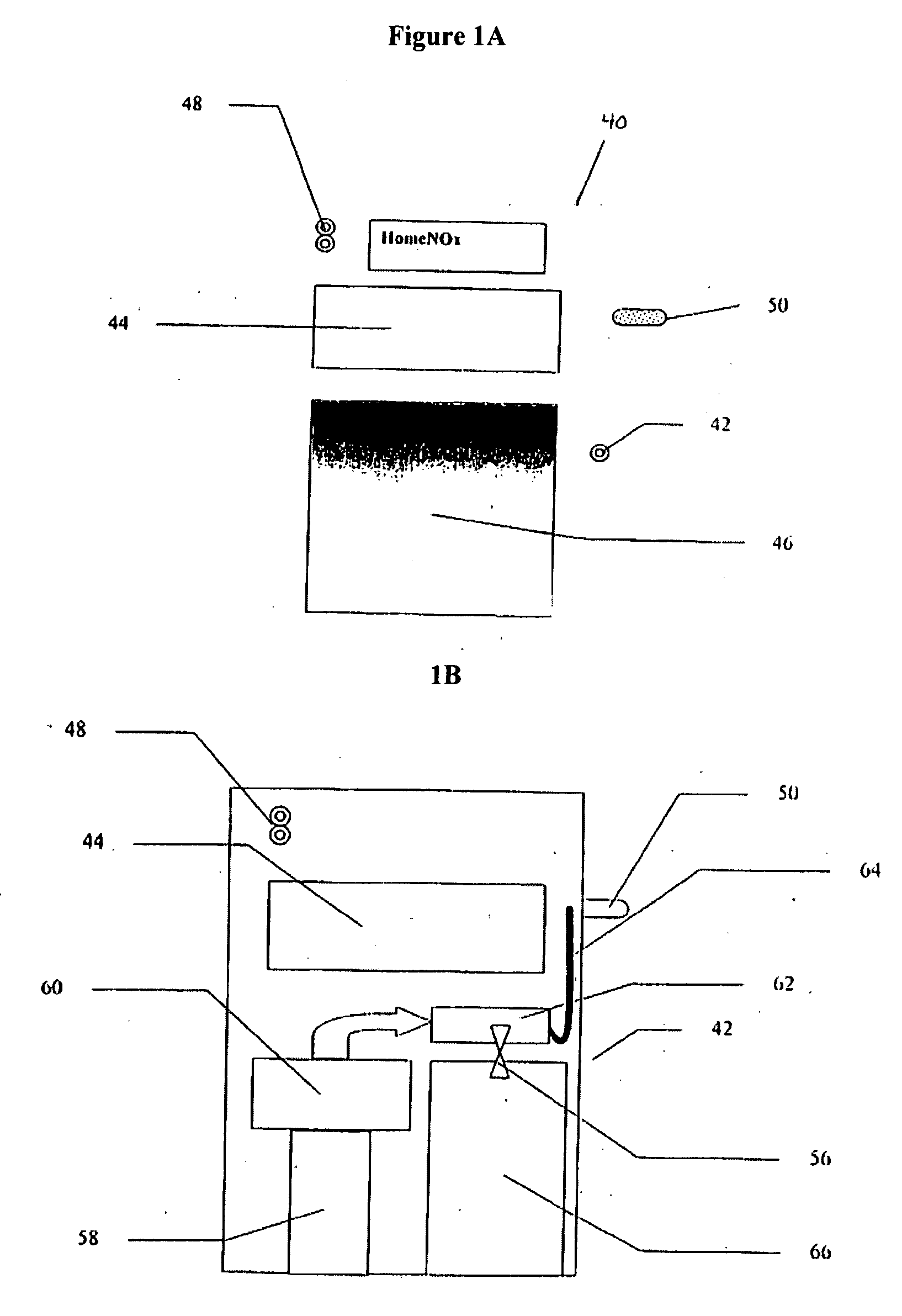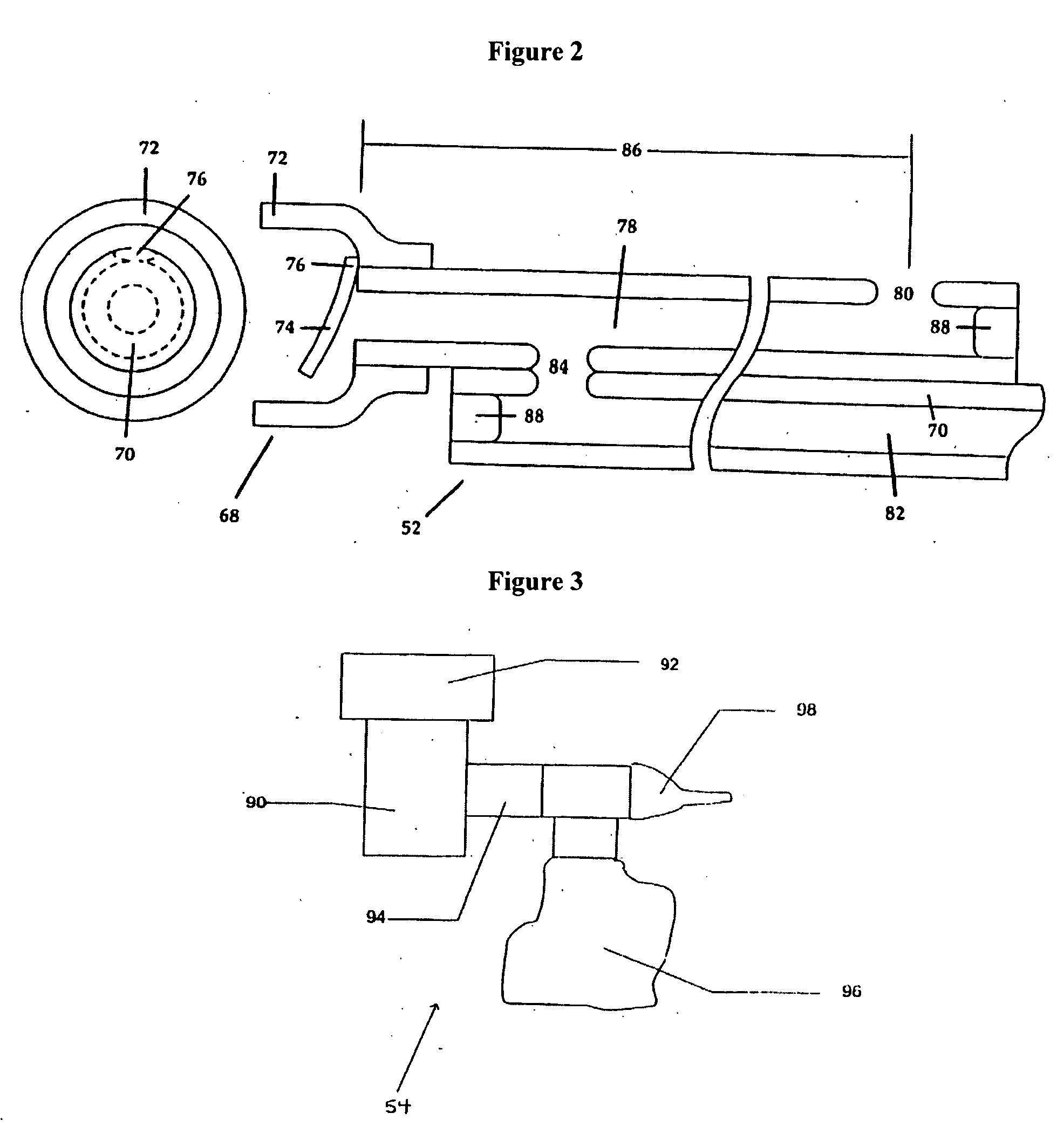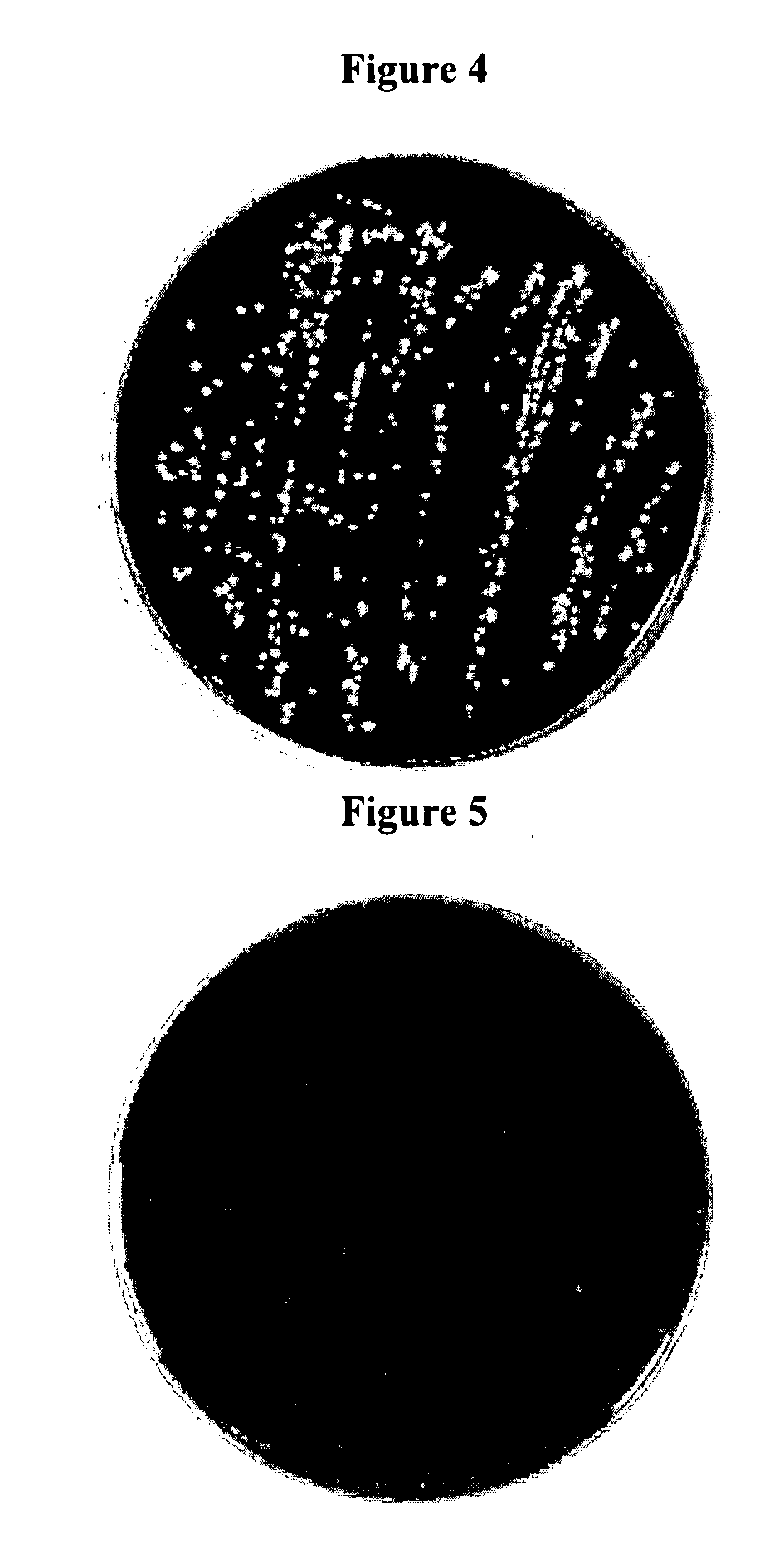Use of gaseous nitric oxide as an anti-cancer agent
a technology of nitric oxide and anti-cancer agent, which is applied in the direction of biocide, plant growth regulator, sensor, etc., can solve the problems of not trying to reproduce mycobacteriocidal or inhibitory action, difficult administration of gaseous no itself, etc., and achieve the effect of effective delivery of gaseous no and effective procedur
- Summary
- Abstract
- Description
- Claims
- Application Information
AI Technical Summary
Benefits of technology
Problems solved by technology
Method used
Image
Examples
example 1
[0125] The purpose of this example is to illustrate the effect of continuous gaseous nitric oxide
[0126] (gNO) 200 ppm and 350 ppm compared to air (control) on the survival of a representative line of cancer cells. Cancer cell lines (A549-epithelial lung carcinoma cells and H460-epithelial metastatic; large cell lung cancer cells) were prepared in F12 medium and suspended in six 96-well plates (3 treatment and 3 controls). The plates were incubated in air (control), 200 ppm gNO, or 350 ppm gNO for 24 hours. The plates then were removed and cell viability assessed by an MTS proliferation assay.
[0127] Results showed greater than 90% survivability (A549) in 200 ppm gNO whereas there was only a 1% (A549) and a 2% (H460) survivability in 350 ppm gNO after 24 hours of continuous exposure as compared to the cells exposed to air (control).
[0128] Tables 1, 2, and 3 below demonstrate the survivability of A549 cells in Ham's F12 and Hank's Balanced Salt Solution (HBSS) mediums (both commerci...
example 2
[0136] The purpose of this example is to observe the possibility of a novel bactericidal high dose (25,000 ppm) effect of gaseous nitric oxide (gNO) on an ATCC strain of Staphylococcus aureus plated on a blood agar media and determine a time effect of this dosage.
[0137] A closed environment treatment chamber was used (see, “A direct nitric oxide gas delivery system for bacterial and mammalian cell cultures,” A. Ghaffari, D. H. Neil, A. Ardakani, J. Road, A. Ghahary, C. C. Miller. Nitric Oxide 12(3):129-140, 2005, herein incorporated by reference in its entirety). The following steps were performed: [0138] 1. Calibrated the AeroNOx analyzer as per standard procedure. [0139] 2. Calibrated the closed environment treatment chamber as per standard procedure. [0140] 3. In a 50 mL tube, known Staphylococcus aureus bacteria in 10 mL Nutrient Broth was grown overnight or for about 12 hours in a shaker incubator. [0141] 4. Measured optical density of grown Staphylococcus aureus using a spect...
example 4
[0154] The purpose of this example is to illustrate the tumorcidal activity of high-dosage gNO. We examined the cellular sensitivity to 25,000 ppm of gNO on 5 non-small cell lung cancer (NSCLC) cells lines by an MTS cell proliferation assay.
[0155] Human lung cancer cell lines A549, NCI-H23, NCI-H460, HTB-58, H2170, and H441 (commercially available from American Type Culture Collection (“ATCC”), Manassas, Va.) were maintained in culture medium recommended by ATCC. All media were supplemented with 1% penicillin / streptomycin and 10% fetal bovine serum (commercially available from Invitrogen Gibco-BRL, Burlington, Ontario, Canada). All cell lines were incubated in a humidified incubator at 37° C. supplied with 5% carbon dioxide. The cell lines were tested regularly for the absence of Mycoplasma infections. The cells were routinely maintained in 25 cm tissue culture flasks (commercially available from BD Biosciences Discovery Labware, Oakville, Ontario, Canada) and were harvested by 0.2...
PUM
 Login to View More
Login to View More Abstract
Description
Claims
Application Information
 Login to View More
Login to View More - R&D
- Intellectual Property
- Life Sciences
- Materials
- Tech Scout
- Unparalleled Data Quality
- Higher Quality Content
- 60% Fewer Hallucinations
Browse by: Latest US Patents, China's latest patents, Technical Efficacy Thesaurus, Application Domain, Technology Topic, Popular Technical Reports.
© 2025 PatSnap. All rights reserved.Legal|Privacy policy|Modern Slavery Act Transparency Statement|Sitemap|About US| Contact US: help@patsnap.com



